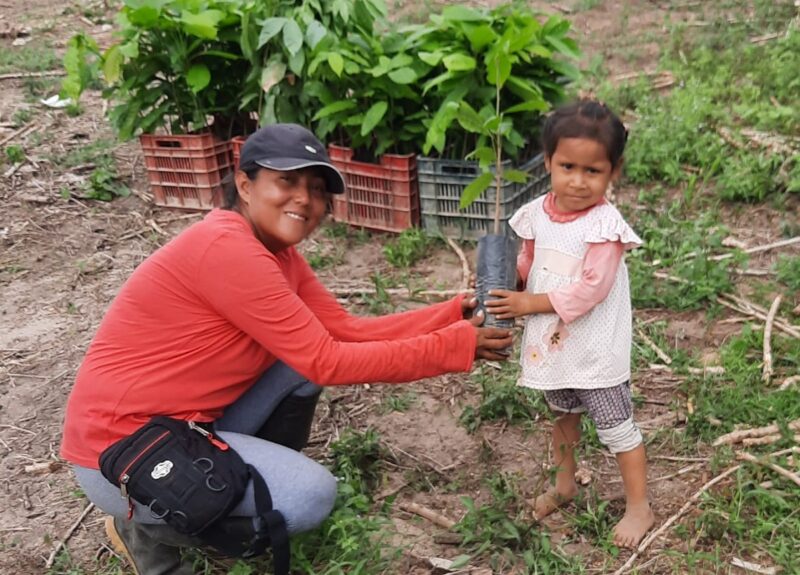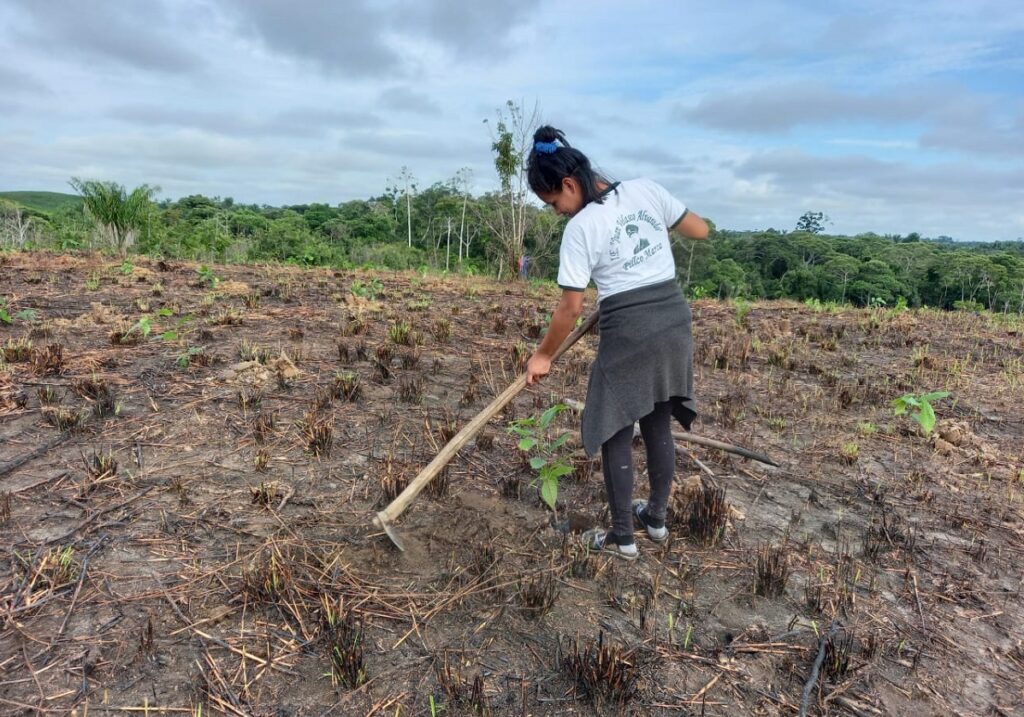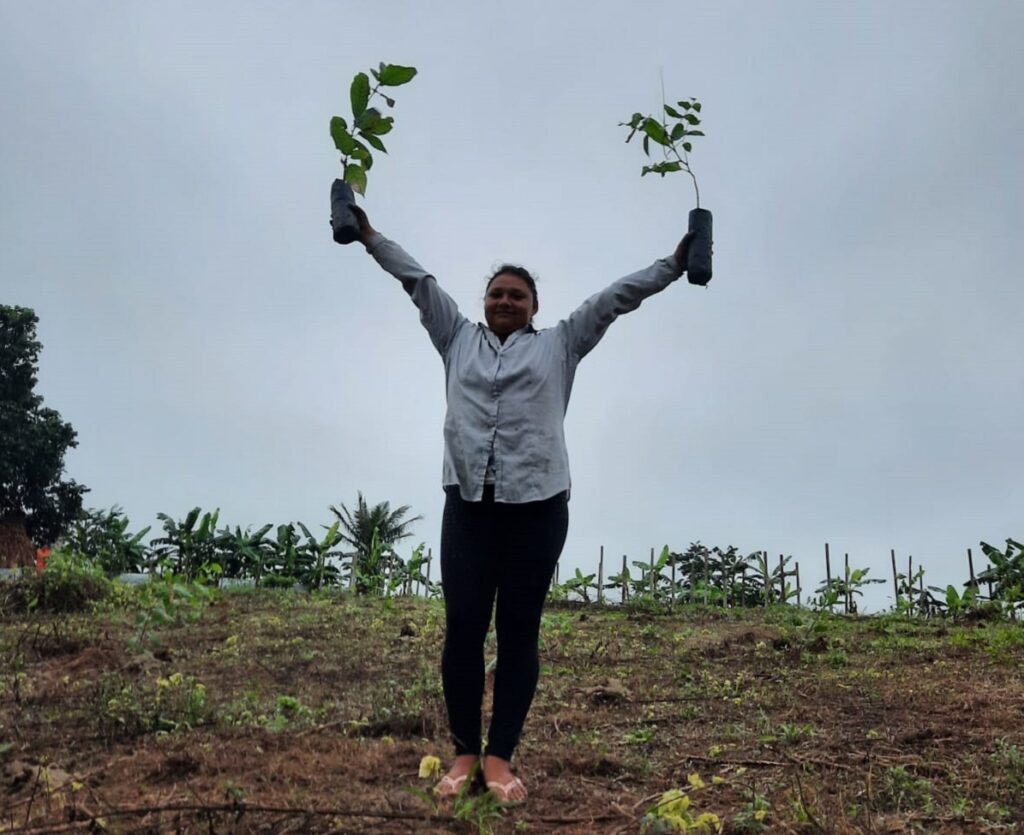Amazon restoration success despite COVID: a Q&A interview with expert Patricia Romero

At Plant Your Future, our team has just finished planting a massive 40,458 native trees across the Peruvian Amazon. Despite the challenges that the pandemic brought, this planting season has been our most successful yet. This could not have been achieved without the heroic effort and dedication off our team in Peru, especially our Managing Director, Patricia Romero.
It’s been an incredibly challenging year for Patricia — suddenly thrown into crisis mode, she supported the team and beneficiary families throughout the worst of the pandemic whilst also recovering from COVID herself and later coming down with Dengue Fever. We carried out a Q&A with Patricia to share more about the highs and lows of the team’s achievements this year despite the ongoing COVID crisis.
Hi Patricia, it’s been a really tough year but let’s start with the best bits. What were some of your highlights from the last planting season?
Definitely the greatest achievement was that in the Ucayali region alone, where I live, we reforested 31 hectares of degraded pasture land, including 10 new families in our programme. The team were outstanding under really difficult conditions: COVID-19, a Dengue epidemic, heavy rains and poor road conditions. But despite these challenges, they did a fantastic job strengthening their skills in planting, plot design, plant distribution, and much more. It was also heartening to see how the families we work with dealt with the situation — last year we were all forced to change our lives completely. And overall, we’re really happy to have achieved our goals and generated jobs for about 80 families who have been able to improve their quality of life.
You listed some of the challenges you and the team have faced this year, what have been the most difficult moments?
It’s a difficult question because so many moments stand out as very challenging. Plant Your Future works in two remote regions of the Amazon — Ucayali and Loreto — and as part of my responsibilities as Executive Director I constantly monitor both regions. But living in the Ucayali region and facing a strict lockdown, I couldn’t travel to Loreto as I usually would do to meet with families and provide advice face-to-face. The current health situation has been very difficult to handle — we were faced with serious consequences, not only to our team but also to the families and communities we work with. I was really concerned and felt responsible for the health of many people — especially as during the last planting stage, the so-called ‘second wave’ of the pandemic began.
I felt a great concern and responsibility for the health of many people.
But we were also frustrated by the spread of a fungus called Rhizoctonia and Pythium which damaged the seedlings of the Marupa (Simarouba amara) tree species. It affected the apex of the plant, increasing the mortality rate of seedlings in the nursery. We also struggled with getting hold of quality inputs for basic fertiliser as the main supplier stopped selling their products in our region, delaying our planting schedule. And the weather also caused a lot of concern — intense and prolonged rains made all the other problems more severe.
There’s been so many difficulties but you’ve achieved so much. How did you overcome these challenges?
Despite not being able to travel to the Loreto region to manage the project myself, my colleague Sergio Lopez — a trained professional who has responsibility for running the project day-to-day and developing the activities — was there. And in terms of controlling the fungus pathogens, teamwork was very important. We quickly and effectively took action with the support and advice of specialists from SENASA (The National Service for Agri-food Health and Quality).
The pandemic has been the most difficult challenge to overcome.
We’ve worked hard to establish safety protocols and are meticulous about identifying the first symptoms, taking extreme care until transmission is ruled out. And then the weather. The impacts of climate change are the result of anthropic activity — a consequence of our actions — so we have to deal with it in the best way we can. It is a wake-up call from nature. But not everything was bad! The rains did play an important role in the seedlings adapting once they were all planted out.
What were the most important lessons that you learnt from these experiences?
The challenges we faced this year have been invaluable for lessons learnt, but perhaps the most important is that it has reinforced how vital teamwork is to ensuring success — not only in the execution of planting, but also with how we communicate our project so that it sparks the interest of communities, associations and individuals.
Last year we ran a COVID Emergency Appeal. Can you tell us how the donations helped during the height of the pandemic?
When Peru was placed into a complete lockdown it was strictly enforced by the military. The families in our projects had no access to gain an income or even attend markets. But the donations meant families didn’t have to suffer from a lower quality diet. We also introduced a new chicken programme, providing families with chicks to raise and coops to house them which has brought a new stream of income. Families are reinvesting and it’s been so successful that we’re now looking to make the programme a permanent addition to our project. We were also able to buy oxygen tanks that we donated to the Rural Community Health Centres and thanks to this someone’s life was saved. The benefits have been invaluable for each family.
A year on, how are communities doing now?
At the moment the pandemic situation in the communities is controlled and the vaccination programme is being carried out according to the schedule of the Ministry of Health.
That’s good news. So, what do you think next year will bring?
Last year alone, the Peruvian Amazon lost approximately 7,000 hectares of forest. It’s really worrying, but it’s the reason our ambition increases every year. We need to continue urgently restoring areas of land so our goal is to plant 150,000 saplings during the next planting season and we are sure that we will achieve it.
That’s a really exciting goal. We can’t wait to hear all the news over the next year. Thanks again for talking to us, Patricia.
You’re welcome and thank you.
amazon rainforest, Biodiversity, climate action, climate breakdown, Climate Change, climate crisis, reforestation, resoration, Sustainability Farming, sustainable development, sustainable farming, tree planting





